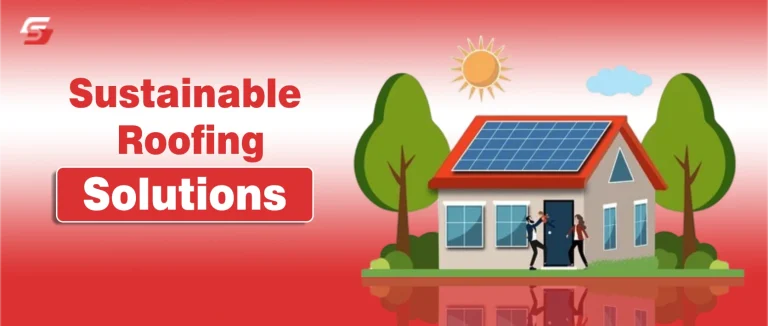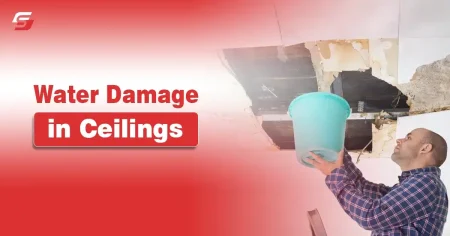Have you ever looked at a roof and thought, “It’s just there to keep the rain out”? Well, not anymore. In this world of rising temperatures, unpredictable storms, and growing environmental awareness, roofs are doing a lot more than sheltering us — they’re becoming key players in the fight against climate change.
From green roofs that cool entire buildings to solar-integrated panels that generate clean energy, sustainable roofing solutions are reshaping modern architecture.
In this article, I’ll explore how innovative roofing systems are transforming the way we design, build, and live, one rooftop at a time.
The Evolution of Green Roofing Technologies
Architects now use roofs as functioning ecosystems that increase energy efficiency and improve environmental impact.
1. Living Roof Systems
Living roofs have advanced into complex ecosystems with drainage layers, engineered media, and carefully chosen plant communities.
Types of living roofs:
- Extensive roofs: Use shallow soils and hardy plants for insulation and stormwater control with minimal structural demand.
- Intensive roofs: Create true rooftop gardens, with trees, paths, and recreational space.
- Semi-intensive systems: Balance vegetation diversity with manageable weight loads.
- Native species integration: Supports local biodiversity, which provides urban habitats while reducing heat island effects and improving air quality.
2. Cool Roofing Technologies
This approach focuses on cooling efficiency and heat reduction for improved building performance.
Key elements:
- Modern cool roofs dramatically lower roof surface temperatures up to fifty degrees Fahrenheit cooler than dark roofs cutting cooling loads.
- Reflective pigments allow diverse colors while maintaining high thermal performance.
- Phase-change materials (PCMs) add another layer of control, absorbing and releasing heat as they shift states flattening daily temperature swings.

How Sustainable Roofing Solutions Help in Climate Resilience?
Sustainable roofing solutions help buildings withstand extreme heat, heavy rainfall, humidity, and energy fluctuations caused by climate change. These roofs reduce emissions and improve long-term durability using advanced materials, optimized by insulation, and smart water management systems.
Different climates require different strategies, which is why sustainable roofing adapts to regional needs in innovative ways.
1. Innovative Materials Reshaping Roofing Design
a) Bio-Based and Recycled Options
Examples include:
- Agricultural waste–derived panels and hemp insulation reduce reliance on petroleum while storing carbon.
- Recycled rubber membranes, reclaimed metal, and composite shingles show that sustainability can match traditional durability.
b) Smart Materials and Adaptive Systems
These technologies improve performance through automation and self-regulation.
Innovations include:
- Thermochromic surfaces adjust reflectance with temperature.
- Photocatalytic coatings self-clean by breaking down pollutants.
- Adaptive roofs use sensors and automation to regulate ventilation and thermal performance in real time.
2. Regional Considerations and Climate-Specific Solutions
Roofing strategies vary by climate to improve performance and address environmental challenges.
a) Hot Climate Strategies
- In arid regions, radiant barriers, ventilation, and reflective membranes limit heat gain.
- Concrete roofs with insulation and reflective coatings store nighttime coolness releasing it by day.
- Growing demand for roofing services in Dallas–Fort Worth highlights the need for regional expertise.
b) Cold Climate Adaptations
- Solutions focus on snow loads ice dam prevention and thermal bridging.
- Continuous exterior insulation and airtight barriers reduce heat loss.
- Heated roof systems powered by renewables prevent ice accumulation while maintaining efficiency.
c) Humid Climate Solutions
- Moisture management and mold prevention are critical.
- Vapor-permeable systems improved ventilation and mold-resistant materials are paired with cool roof tech to combat heat and humidity together.
3. Integration with Renewable Energy Systems
Roofs are increasingly being used for energy generation instead of just weather protection.
a) Solar Strategies
- Building-integrated photovoltaics (BIPV) now serve as both roofing and energy systems blending aesthetics and performance.
- Solar shingles mimic traditional materials while flexible films adapt to curved or irregular surfaces.
b) Wind and Geothermal Integration
- Small rooftop wind turbines supplement solar where viable.
- Geothermal heat pumps often require rooftop exchangers requiring coordination with roof design to maintain protection and performance.
4. Water Management and Stormwater Solutions
Roofs can now help manage rainwater efficiently and safely.
a) Advanced Drainage Systems
- Integrated rainwater harvesting supports irrigation and cooling.
- Blue-green roofs combine vegetation with stormwater storage releasing water slowly to reduce flood risks.
b) Permeable and Porous Systems
- Porous concrete and engineered membranes manage runoff while maintaining structural integrity.
- Proper integration ensures water infiltration doesn’t compromise waterproofing.
5. Performance Monitoring and Maintenance
Modern roofs include technologies that improve lifespan and enable performance monitoring.
a) Smart Monitoring
- Embedded sensors track thermal performance, moisture, and energy generation.
- Drone inspections and thermal imaging detect issues early extending roof life.
b) Lifecycle Maintenance
- Durable repairable and recyclable materials minimize long-term impact.
- Green roofs require horticultural care, while solar-integrated roofs need electrical maintenance, demanding specialized knowledge.
Final Thoughts
Sustainable roofing redefines architecture, transforming roofs from passive barriers into active systems that enhance resilience and environmental health. Advanced materials, renewable energy integration, water management, and intelligent monitoring create opportunities to exceed traditional standards.
The future of architecture depends on harmonizing buildings with natural systems while ensuring efficiency and comfort. Sustainable roofing technologies offer architects powerful tools to deliver resilient, high-performing structures that benefit both people and the environment.











